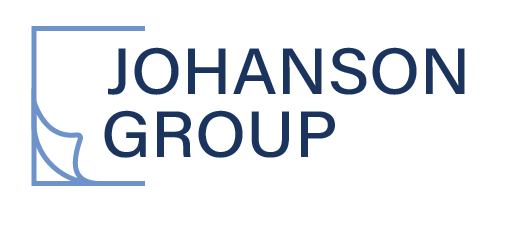Common Cybersecurity Audit Pitfalls and How to Avoid Them
Cybersecurity audits are essential for any organization looking to strengthen its defenses, ensure compliance, and build trust with customers. But while the goal is clear, the path to a successful audit can be fraught with missteps. Many organizations fall into common traps that can derail the process, lead to incomplete findings, or even result in compliance failures.
The good news? Most of these pitfalls are entirely avoidable with proper planning and execution. This blog post will highlight the most frequent mistakes organizations make during cybersecurity audits and provide actionable solutions to ensure your next audit is a smooth and productive experience.
Pitfall #1: Underestimating the Scope and Resources Required
One of the biggest mistakes is treating a cybersecurity audit as a quick checkbox exercise. Organizations often underestimate the time, personnel, and documentation required, leading to last-minute scrambles and incomplete information.
How to Avoid It:
Plan Ahead, Way Ahead: Start preparing months in advance. Understand the audit's scope (e.g., ISO 27001, NIST, SOC 2, HIPAA, PCI DSS) and identify all the areas that will be scrutinized.
Allocate Dedicated Resources: Assign a core team to the audit process. This includes not just IT and security personnel, but also representatives from legal, HR, and operations, depending on the audit's scope.
Budget Appropriately: Factor in not only the auditor's fees but also potential costs for pre-audit assessments, necessary technology upgrades, or training.
Pitfall #2: Insufficient Documentation and Evidence
Auditors rely heavily on documented evidence to verify your security controls. A lack of clear, up-to-date policies, procedures, and evidence of their implementation is a surefire way to generate audit findings. This often stems from poor record-keeping or a "we know what we do" mentality without it being formally written down.
How to Avoid It:
Document Everything (Relevant): Ensure all security policies, procedures, incident response plans, access control lists, configuration standards, and training records are well-documented and current.
Implement Strong Change Management: Any changes to systems or processes that impact security should be documented, along with approval trails.
Automate Evidence Collection Where Possible: Utilize security information and event management (SIEM) systems, vulnerability scanners, and configuration management tools to automatically collect and store evidence of control effectiveness.
Organize Your Evidence: Create a centralized, easily accessible repository for all audit-related documentation.
Pitfall #3: Lack of Communication and Collaboration
Cybersecurity audits often involve multiple departments and stakeholders. Poor communication between teams, or between the organization and the auditors, can lead to misunderstandings, delays, and frustration.
How to Avoid It:
Establish Clear Communication Channels: Designate a primary point of contact for the audit team. Hold regular internal meetings to discuss progress, challenges, and assigned tasks.
Foster Cross-Departmental Collaboration: Ensure that IT, legal, HR, and other relevant departments are aware of their responsibilities and actively participate in providing necessary information.
Be Transparent with Auditors: Don't hide issues. Open and honest communication about your security posture, including any known weaknesses, can actually build trust and lead to more constructive recommendations.
Pitfall #4: Neglecting Pre-Audit Assessments and Remediation
Waiting until the official audit begins to discover your weaknesses is a recipe for disaster. Many organizations skip pre-audit assessments, leaving them vulnerable to unexpected findings.
How to Avoid It:
Conduct Regular Internal Audits: Implement a continuous internal audit program to identify and address security gaps proactively. This helps you mimic the external audit experience and fix issues before they become formal findings.
Perform Penetration Testing and Vulnerability Scans: Regularly test your systems for exploitable weaknesses. This provides an attacker's perspective and helps prioritize remediation efforts.
Prioritize Remediation: Don't just identify issues; fix them. Develop a clear remediation plan for any vulnerabilities or policy gaps found during pre-assessments and track progress diligently.
Pitfall #5: Focusing Solely on Compliance, Not True Security
While compliance is a key driver for many audits, an overemphasis on merely "checking the boxes" without genuinely improving your security posture is a dangerous pitfall. Compliance does not equal security.
How to Avoid It:
Adopt a Risk-Based Approach: Identify your most critical assets and the threats they face. Prioritize security controls based on the potential impact of a breach, not just what's required by a specific framework.
Embrace Continuous Improvement: View audit findings as opportunities for growth, not just deficiencies to be corrected. Implement a robust security program that continuously adapts to the evolving threat landscape.
Educate Your Workforce: Human error remains a leading cause of breaches. Regular security awareness training can significantly enhance your overall security posture beyond mere compliance.
Conclusion: Your Audit as a Catalyst for Stronger Security
Cybersecurity audits, when approached correctly, are invaluable tools for validating your security controls, identifying weaknesses, and driving continuous improvement. By avoiding these common pitfalls – through meticulous planning, thorough documentation, clear communication, proactive remediation, and a genuine focus on security – your organization can transform a potentially stressful event into a powerful catalyst for a more robust and resilient cybersecurity posture.
Need help navigating your next cybersecurity audit? Get started today for expert guidance and support.



